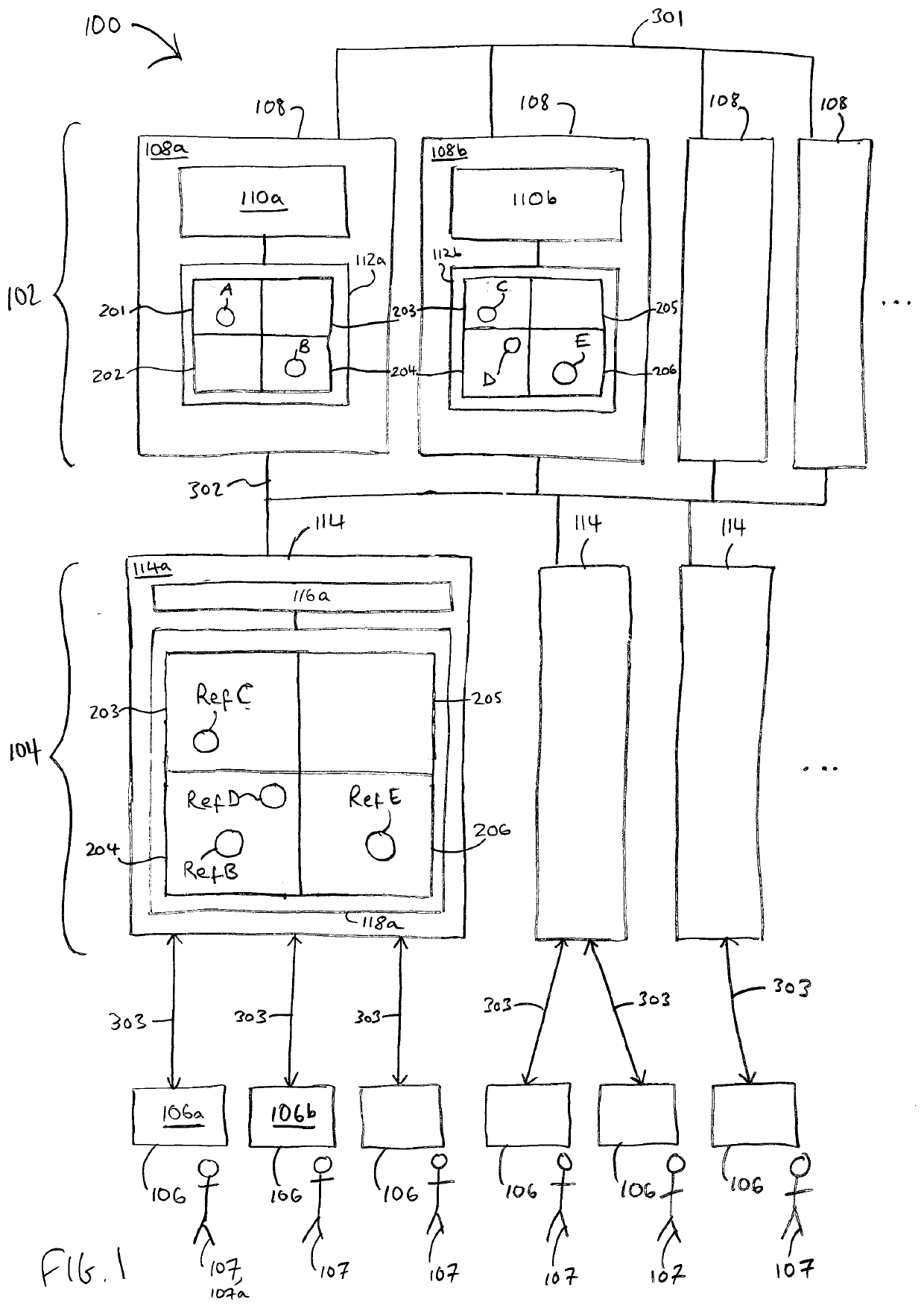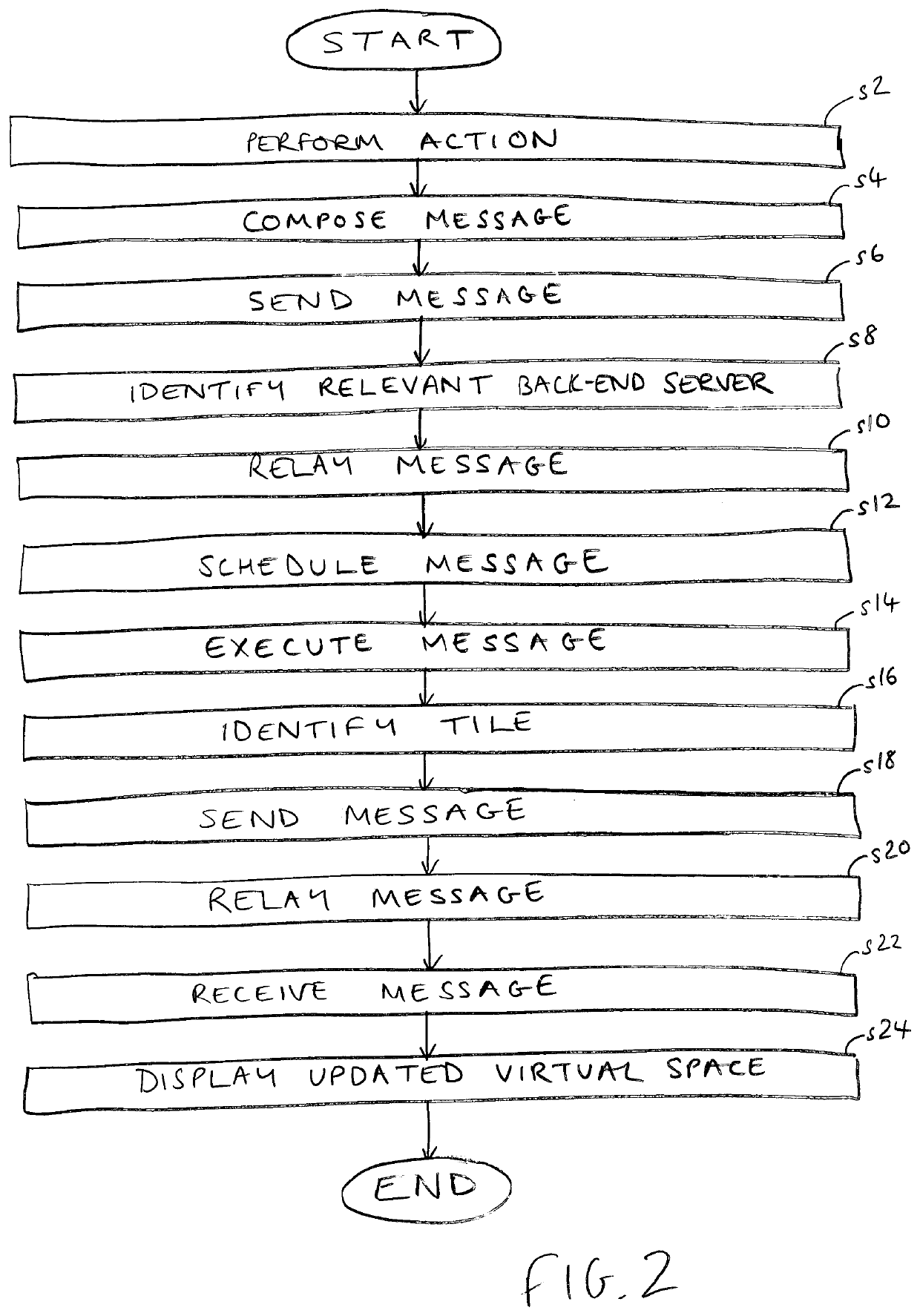Server system for processing a virtual space
- Summary
- Abstract
- Description
- Claims
- Application Information
AI Technical Summary
Benefits of technology
Problems solved by technology
Method used
Image
Examples
Embodiment Construction
[0030]FIG. 1 is a schematic illustration (not to scale) of an embodiment of a system 100 for processing a virtual 3D space. The system 100 may for example simulate a virtual world of an MMO video game.
[0031]In this embodiment, the system 100 processes or simulates the virtual 3D space substantially as described in International Application No.: PCT / US2017 / 060430, Publication No.: WO / 2018 / 085851, “SYSTEM AND METHOD FOR FACILITATING SHARING OF VIRTUAL THREE-DIMENSIONAL SPACE”, the entirety of which is incorporated herein by reference. Thus, entities and objects within the virtual 3D space may be fully functional “nodes” or “actors”, which are connected to other objects via edges. Messages can be sent between nodes to update their internal states. The system 100 contains object engines containing nodes having the properties of actors. These nodes can receive messages and respond to each such message it receives by changing internal state, generating one or more new messages, or creatin...
PUM
 Login to view more
Login to view more Abstract
Description
Claims
Application Information
 Login to view more
Login to view more - R&D Engineer
- R&D Manager
- IP Professional
- Industry Leading Data Capabilities
- Powerful AI technology
- Patent DNA Extraction
Browse by: Latest US Patents, China's latest patents, Technical Efficacy Thesaurus, Application Domain, Technology Topic.
© 2024 PatSnap. All rights reserved.Legal|Privacy policy|Modern Slavery Act Transparency Statement|Sitemap


